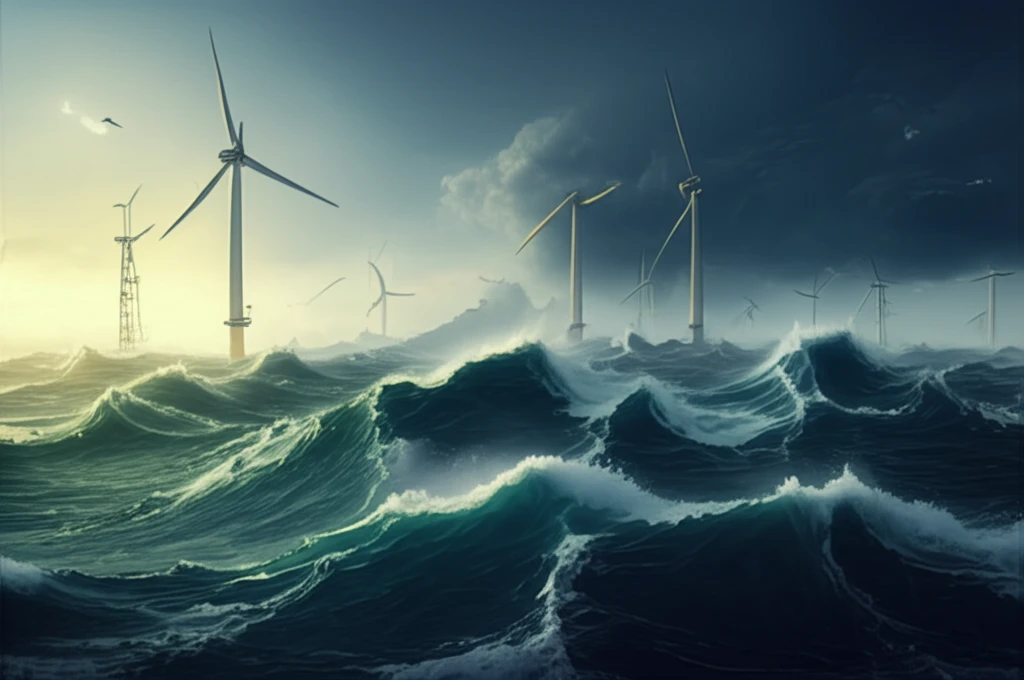
Navigating Extreme Ocean Waves: How Safe Are Offshore Wind Farms?
"A deep dive into the science of predicting rogue waves and their impact on the future of renewable energy infrastructure."
The quest for renewable energy sources has led to increased interest in offshore wind turbine installations. Unlike land-based wind farms, these structures require relatively shallow waters to be economically feasible. The Doggerbank area in the southern North Sea is a prime location, but it presents unique challenges. Water depth varies significantly, from approximately 60 meters in the north to just 20 meters in the south, posing complex engineering problems.
Designing these bottom-fixed wind turbines demands a thorough understanding of environmental forces, especially extreme wave conditions. Predicting these conditions is crucial, but it comes with inherent uncertainties. While wave kinematics and structural loads are important, the ability to forecast the most powerful waves remains paramount for ensuring the safety and longevity of these renewable energy giants.
Reliable metocean data—meteorological and oceanographic information—is essential for accurate predictions. For the North Sea, the Norwegian Meteorological Institute's NORA10 hindcast model provides valuable data. While NORA10 is accurate for deeper waters, its effectiveness in reflecting changing wave conditions in shallower waters (less than 70 meters) is less certain. The model's spatial resolution of 10 km may not fully capture the complexities of wave behavior as water depths decrease.
The Science of Extreme Wave Prediction: Unpacking the Models

To address these uncertainties, scientists are comparing NORA10 data with results from SWAN (Simulating Waves Nearshore), a widely used shallow-water hindcast model. SWAN is designed to simulate wave generation, propagation, and dissipation in coastal regions, accounting for factors like wave shoaling and breaking. By comparing the two models, researchers hope to refine their understanding of wave behavior in the variable water depths of the Doggerbank area.
- NORA10: A high-resolution hindcast model providing metocean data from 1957 to present. Known for good agreement with measured data in deep and moderate water depths.
- SWAN (Simulating Waves Nearshore): A shallow-water hindcast model designed to simulate wave processes in coastal areas. Accounts for wave generation, propagation, and dissipation.
- Environmental Contour Concept: A method used to determine extreme sea conditions by analyzing joint probability density functions of significant wave height and peak period.
Future Directions: Ensuring the Safety of Offshore Wind Farms
Ultimately, this research contributes to safer and more reliable designs for offshore wind turbines. By understanding how extreme wave conditions evolve in shallow water environments, engineers can better protect these structures from potential damage. Further studies, including in-situ measurements and refined modeling techniques, are essential to reduce uncertainties and ensure the long-term viability of offshore wind energy as a key component of our renewable energy future.
